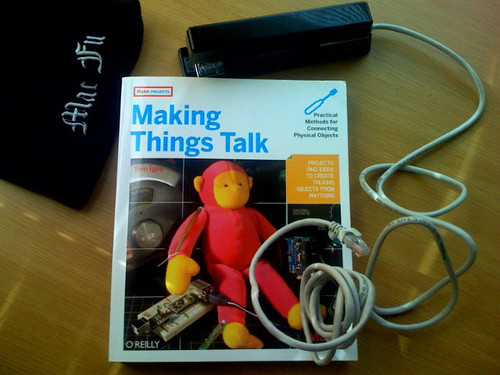
 About the time home computers became commonplace, people got the bright idea that this wondrous new gadget could interface with everything electrical in your house. Why couldn’t you control lights and temperature via a computer? Why can’t your clock radio talk to your toaster? Ultimately, while fascinating, the home automation phenomenon never really took off. Part of the problem was that the microcontrollers needed for interfacing between analog and digital worlds were prohibitively expensive.
About the time home computers became commonplace, people got the bright idea that this wondrous new gadget could interface with everything electrical in your house. Why couldn’t you control lights and temperature via a computer? Why can’t your clock radio talk to your toaster? Ultimately, while fascinating, the home automation phenomenon never really took off. Part of the problem was that the microcontrollers needed for interfacing between analog and digital worlds were prohibitively expensive.
No longer. A couple of years ago a half-dozen developers collaborated on a microcontroller project that eventually came to be called the Arduino. Affordable, open source, programmed by freeware and easy to use, the platform’s popularity has grown exponentially since its introduction. Already tinkerers have begun expanding Arduino’s horizons beyond anyone’s expectations. For instance, Leah Buechley developed a wearable Arduino and accompanying clothing-based power supply, actuators and sensors (connected with conductive thread, how cool is that?) Clearly the idea has expanded far beyond smart homes.
Enter Making Things Talk: Practical Methods for Connecting Physical Objects. Written by Tom Igoe, one of the original developers of the Arduino microcontroller, the book is a guide to this exciting new platform. In some respects the technology can intimidate because it such a huge idea: interfacing the analog with the digital, or as Igoe puts it, making things talk to other things. And while the Arduino has made these once-impossible tasks attainable, there is still a learning curve. Igoe pulls no punches; while there is some introductory info, the book assumes you have a basic familiarity with electronics, as well as experience programming microcontrollers. The Arduino platform uses Processing, a free and open-source programming language designed for artists and hobbyists, so the learning curve is relatively low compared to some other languages.
Igoe’s book takes the reader step by step, beginning with tools you’ll need, covering various networking theories, programming tips and other techniques. Along the way he outlines 26 projects that are the meat of the book; the first is a pink monkey that has been hacked to serve as a computer mouse. Project 13 involves relaying solar cell data wirelessly. Project 19 shows you how to determine a heading using a digital compass. Some of the projects serve mainly to illustrate many of the different possibilities of the technology rather than to be “cool” — for instance, Project 8 shows how to make a 19,200 baud infared transmitter-receiver set but doesn’t pair that tech with some neat gizmo. Others are more of a complete project, like the cymbal monkey (Project 12) that bangs its cymbals when it senses toxic chemicals in the air around it.
The cool thing and the scary thing about the Arduino phenomenon is the vastness of its potential. Making Things Talk is a thick and very dense manual that does an admirable job of covering as much terrain as possible.
